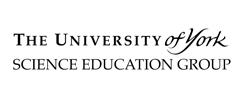Discovery and development of new medicines
At GCSE, students will need to be able to describe the process of discovery and development of potential new medicines, including pre-clinical and clinical testing.
Students often do not appreciate the level of testing that is required for a new medicine to be approved, and often have opinions on animal testing that are not necessarily evidence based. Watching video clips and setting up a debate would be useful activities for learners to gain a better understanding of the use of animal testing as a critical stage in the clinical trials process.
Whilst this list provides a source of information and ideas for experimental work, it is important to note that recommendations can date very quickly. Do NOT follow suggestions which conflict with current advice from CLEAPSS, SSERC or recent safety guides. eLibrary users are responsible for ensuring that any activity, including practical work, which they carry out is consistent with current regulations related to Health and Safety and that they carry an appropriate risk assessment. Further information is provided in our Health and Safety guidance.
Ugly Cures *suitable for home teaching*
Chemicals within the cells of living things may provide the basis of a host of treatments in the fight against disease. Two hundred different secretions with medical properties have been isolated from frog skins alone, including antibiotics which could be used to treat resistant strains of disease such as MRSA. This video highlights examples of chemicals found in nature which are being trialled in different countries.
Where Do Medicines Come From?
This activity will help students understand that the drug discovery process is long and complex and involves several different stages including basic research, animal testing and clinical trials. The activity involves some whole class teacher led discussion then some group work. There are also suggested extension activities.
The resource includes a useful, clear and well illustrated information leaflet, teacher notes and student activity. It is produced by the Understanding Animal research society, who also have a website which contains a wealth of further information: http://www.understandinganimalresearch.org.uk/
Drugs *suitable for home teaching*
While providing immense benefits, drugs are not the perfect solution. They only work on a proportion of patients, sometimes they harm us, and we're not very good at taking them as we should. For some diseases, particularly those affecting only developing countries, there are no drugs available or they are too expensive. How has this situation come about? What part do pharmaceuticals play in modern life? And where might we go in the future?
Testing New Medicines *suitable for home teaching*
This Catalyst article explores the testing of new medicines to see if they are safe for people to take. The article looks at the processes involved, from laboratory tests to clinical trials. It includes details about how the effects on cells of a potential new drug are investigated using tissue cultures of human or animal cells.
The article discuses how a substance that harms abnormal cells, such as cultured cancer cells, or stops viruses infecting cells could be useful, but at the same time, scientists must check that the drug does not affect normal cells. Students could be given this article to read as a self study/homework activity and could use the suggested links to complete some independent research. It would also be possible to develop questions related to this article.
There are many ways to make effective use of Catalyst articles such as this. A booklet has been produced which provides ideas on how Catalyst articles can be used with students and includes six exemplar activities. This booklet can be accessed at: https://www.stem.org.uk/elibrary/resource/27308
Double Blind
In this discussion activity students consider whether new treatments should ever be tested on human volunteers. The activity is set in the context of a clinical trial that has gone wrong with volunteers left fighting for their lives.
The resource includes a set of teacher notes and student activity sheets. This activity could be extended with students asked to research any actual examples of clinical trials going wrong and compare this with the number of actual clinical trials that take place.
Clinical Trials
This resource provides background information and lists of web sites for further research that would allow teachers to set up a debate activity based on the statement “clinical trials in developing countries are exploitative”.
Half the class can be assigned to be “for” and half “against”. They can each be provided with the relevant list of websites to research and make their evidence based arguments from. The background information provided could be read through as a whole class activity as could the essential reading links.
Magic Bullet
Although a relatively dated resource (2009) there is a lot of useful information within this resource and some potentially useful student activities.
The central focus of this unit is Paul Ehrlich’s imaginative idea that it should be possible to find chemicals that target and kill disease-causing organisms while leaving normal body cells unharmed – ‘magic bullets’. This theory paved the way for modern chemotherapy. Students find out about the first modern chemotherapeutic agent – Paul Ehrlich's arsphenamine, an arsenic compound used to treat syphilis. This was later followed by sulphonamides and penicillin. Today monoclonal antibodies are used to treat a wide array of human diseases including cancer.
Ebola
In this activity students are asked if they would trial a new Ebola vaccine. They gather information from different sources on the provided presentation, weigh up risks and benefits and apply what they know about genetics to decide if it is a risk worth taking.
This is a useful activity to draw together a range of topics in GCSE Biology: communicable diseases, genetics and development of new treatments.
The activity is relatively short, 30 minutes, and has been set up as a whole class activity based around teacher led presentation/discussion and some group work based on the presentation.
Fighting Disease Unit Guide
Whilst this is a dated publication (1987) the final two chapters/lessons are relevant to this topic area and provide some useful ideas about how to structure the delivery of this topic area and a range of possible student activities.
There are questions included within the text that could be extracted and used for class activities or homework activities. One possible activity would be for students to work in groups, to come up with a list of questions that a clinical trial must address and then compare this with questions provided in the text:
- How does the drug interact with the body?
- Does the drug do what it is supposed to do without affecting other reactions in the body?
- Are there any other unpleasant/ dangerous side-effects?
- What happens when regular doses are taken over a long period of time?
- What happens if a single large dose, effectively an overdose, is taken? •
- Does the drug affect reproduction and fertility?
- Does the drug affect any children conceived after it has been taken?
- Does the drug affect the skin, eyes or any other organs with which it might accidentally come into contact?
Bench to Bedside
This video, from the Swiss pharmaceutical company Roche, begins with the role of bacteria in infections and antibiotic resistant bacteria. In its second half it covers the various stages in drug development and looks at job roles and the routes into them within the pharmaceutical industry.









